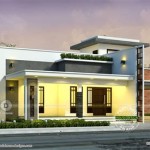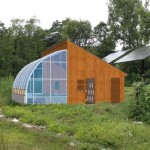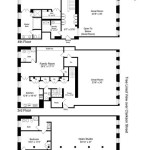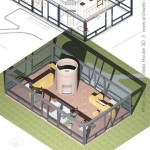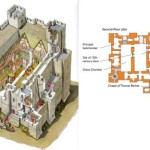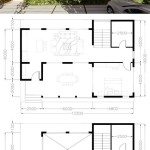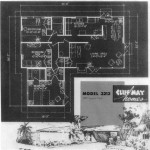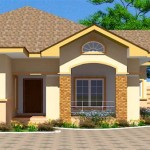Fancy Bluebird House Plans: A Guide to Creating a Stylish and Functional Home for Your Feathered Friends
Bluebirds are a beloved sight in backyards across the country, their bright plumage and cheerful songs bringing a touch of whimsy to any landscape. Attracting these beautiful birds to your property can be as simple as providing them with a safe and comfortable place to nest. Bluebird houses, often referred to as "bird boxes," offer a haven for these feathered friends, fostering their reproduction and ensuring their well-being. However, the design of a bluebird house goes beyond functionality; it can be a creative outlet, allowing homeowners to personalize their backyard with unique and aesthetically pleasing structures. While the basic principles of a bluebird house remain constant, there are numerous possibilities for incorporating "fancy" elements, making the house not only a haven for birds but also a charming addition to the landscape.
Beyond the Basic: Embracing the Fancy
Traditional bluebird houses are typically simple, crafted from untreated wood with a single entrance hole. While such designs serve their purpose, there's a world of possibilities for enhancing the aesthetics and functionality of these structures. Introducing "fancy" elements can involve incorporating decorative features, unique materials, and personalized touches, turning the birdhouse into a cherished element of your garden.
For instance, incorporating a roof overhang can provide additional protection from the elements, while using a decorative trim or a custom-made roof design can add a touch of elegance. The entrance hole itself can be embellished with a whimsical bird carving or a decorative plaque, adding visual appeal and highlighting the house's purpose. Moreover, the choice of materials extends beyond plain wood. Recycled materials like repurposed wood, metal, or even upcycled items can be incorporated to create a unique and sustainable design.
Key Features for a Fancy Bluebird House:
While "fancy" elements can be incorporated in any design, there are certain key features that are essential for creating a successful and attractive bluebird house.
1. Location, Location, Location:
Placing the birdhouse in a strategic location is crucial for attracting bluebirds and ensuring its longevity. A location that offers ample sunlight, protection from predators, and proximity to a water source is ideal. The house should be placed about 5-6 feet off the ground, facing east or southeast to maximize morning sunlight and minimize exposure to harsh afternoon sun. Consider the surroundings, ensuring the house blends harmoniously with your landscape while providing the necessary protection and visibility for the nesting birds.
2. Size Matters:
The dimensions of the bluebird house are critical for accommodating the birds and their nesting habits. An ideal size would be 6” x 6” x 12” with a 1.5” entrance hole. The interior should be spacious enough for the birds to nest comfortably and raise their young, while the entrance hole should be the right size to discourage larger birds from competing for space.
3. Ventilation and Drainage:
Providing proper ventilation and drainage is essential for maintaining a healthy environment inside the birdhouse. Ventilation can be achieved through small openings, often located on the back or side of the box, allowing for air circulation and preventing mold growth. Drainage holes on the bottom of the house are vital to prevent water pooling and create a dry environment for the nesting birds. A slight forward tilt can also help with drainage.
4. Material Choices:
The choice of material for a bluebird house can impact its durability, aesthetic appeal, and even the comfort of the nesting birds. Here are some commonly used materials:
Untreated Wood: This is the most traditional and widely preferred material for birdhouses. It’s readily available, affordable, and naturally durable.
Cedar: Known for its natural insect-repelling properties, cedar wood is a durable choice that adds a rustic appeal to the design.
Recycled Materials: Repurposed wood, metal, or other sustainable materials can be used to create a unique and eco-friendly bluebird house. Think of using old fence posts, salvaged boards, or even metal cans.
5. Decorative Touches:
Adding decorative elements can transform the birdhouse into a beautiful and personalized piece of art:
Painted Designs: Adding a coat of paint with intricate details, nature-inspired motifs, or bright colors can create a visually appealing and eye-catching birdhouse.
Wood Carvings: Carving birds, flowers, or geometric patterns into the surface of the wood can add a personal touch and create a truly unique design.
Roof Styles: Experiment with roof styles to embellish the birdhouse. Gable roofs, hip roofs, and even shingled roofs can add character and protection against the elements.
Building a "fancy" bluebird house not only provides a safe haven for these beautiful birds but also becomes a delightful expression of your creativity and appreciation for nature. By incorporating unique designs, personalized touches, and thoughtful attention to detail, you can create a birdhouse that is both functional and aesthetically pleasing, transforming your backyard into an inviting haven for both birds and humans. The process of building the house can be as rewarding as watching the bluebirds raise their young, adding a touch of magic to your outdoor space.

Plans Birdhouse For Bluebirds Grinder Jig Bird House Free Kits

A Simple One Board Cedar Bluebird House Growit Buildit

Pin By Kimmy Meyer On Garden And Outdoor Fun Ideas Bird House Plans Free Bluebird

Free Bird House Plans Bluebird Purple Martin Wren More

Create A Charming Garden With The Girl S Chi

Free Bluebird House Plans Multiple Designs

Making Birdhouses Easy And Advanced Projects Martin Bird House Kits Houses

Bird House Designs Yard Envy

Bluebird Houses The Definitive Guide 7 Free Plans Bird Watching Hq
:max_bytes(150000):strip_icc()/birdhouse-bd244c546f454563a8c887babfba0806.jpg?strip=all)
32 Free Diy Birdhouse Plans You Can Build Today

